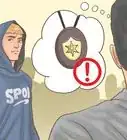This article was co-authored by Clinton M. Sandvick, JD, PhD. Clinton M. Sandvick worked as a civil litigator in California for over 7 years. He received his JD from the University of Wisconsin-Madison in 1998 and his PhD in American History from the University of Oregon in 2013.
There are 11 references cited in this article, which can be found at the bottom of the page.
This article has been viewed 69,900 times.
When the police pull you over for an alleged traffic violation, you may experience a number of different emotions, including anger, fear, embarrassment or frustration. It is important that you respond appropriately for your own personal safety. Even if you feel that the stop was unjustified, you should not debate the issue with the police but rather fight the ticket in court at a later time. You do have the right to respectfully refuse to give the police consent to search your car. During the traffic stop, be respectful, do not offer any additional information, and keep your hands visible at all times.
Steps
Responding to the Flashing Lights
-
1Pull over. Whether the car is an easily identifiable police car or an unmarked car with police lights, it is important to pull over as soon as you can safely do so. Use your turn signals to identify that you are pulling over and make your way to the right-hand side of the road.
- Do not make an erratic driving moves such as speeding up or slamming on the brakes.
- Do not pull into the left-hand lane as it may appear that you are trying to get away.
-
2Turn off the car. As soon as you pull over, turn on the internal light, put your window down part way, and turn off the car. Once your window is down, place your hands on the steering wheel and do not move until after the police approach you.[1]
- When police officers approach your car, they are worried about their own personal safety. By placing your hands on the steering wheel and turning on the light, you are alleviating some level of fear that an officer may have as they approach your car.
- Do not make any unnecessary movement. The officer may believe that you are trying to hide something illegal or increases their concern that their life may be at risk.[2]
Advertisement -
3Provide your license and other documents. Once the officer approaches your window, he or she may ask for your driver’s license, registration and proof of insurance. If your paperwork is in your pocket, glove compartment or bag, let the officer know that you need to retrieve those items. Once the officer gives his or her permission for you to proceed, slowly gather your documents and pass them through the partially opened window.
- Do not get out of the vehicle unless you are instructed to by the officer.[3]
Speaking with the Police
-
1Be respectful. While you may feel frustrated, angry, frightened, or any other emotions about the police pulling you over, it is important that you remain calm and treat the officer respectfully. Do not give the police any justification to extend the traffic stop any longer than it needs to be.
- You should not flee from the police or touch the police officer.
- Do not resist the police. If you place your hands on them or appear as if you are failing to comply with their orders, you can be charged with a crime. Even minor resistance is a misdemeanor.[4]
-
2Do not speak first. Let the officer approach the car and let them take the lead in the stop. Most likely they will ask for your license and car registration.
- As discussed above, if the documents are not readily accessible, tell the officer where they are located and ask permission to retrieve them.[5]
-
3Give noncommittal responses. The officer may ask you some questions when he or she approaches your car and it is best to give very short answers or not answer at all. You should not argue with the police officer. Remember, both you and any passengers have the right to remain silent. If you choose to remain silent, tell the officer that you are asserting your right to remain silent.[6] Below are a few examples of questions you may be asked.
- The officer may ask, “Do you know why I pulled you over?” It is best to reply with a simple “no.”
- You may be asked “do you know how fast you were going?” You can reply “yes I do,” but do not give any additional information.
- If the officer tells you how fast she or he thinks you were going, do not argue but instead say something like “I see” or do not answer at all.[7]
-
4Comply with legal requirements. Police officers have the right to view your driver’s license, proof of insurance and registration in a routine traffic stop. If the police ask for these items, you must comply.
- You are not legally required to give the police any additional verbal responses or give them permission to search your car.
- If the police order you out of your car, you must comply but, as discussed below, if they ask you, “do you mind if we look in your car, you can respectfully refuse.”[8]
-
5Refuse to give consent to search your car. Some police officers will ask to search your car. You should politely refuse. The officer may state that he or she has probable cause to search your car, which means that they are legally justified in conducting the search. If the police officer orders you out of the car, comply with the request and do not argue.
- Since you have already refused consent to search the car, a lawyer can challenge the search on legal grounds should you decide to pursue the case of if you have illegal contraband in your car.
- If the officer asks you to step out of the car, he or she may pat you down to make sure that you are not carrying any weapons. Do not resist the pat down and do not act aggressively in any way.[9]
-
6Ask if you can leave. Once the officer issues you a ticket or if they do not issue you a ticket but do not appear to be making any move to do so, you can respectfully ask whether you are allowed to leave. Unless you are under arrest or the officer is preparing your ticket, you have the right to leave the location.
-
7Remain silent if arrested. If your traffic stop turns into an arrest, do not say anything to the police other than requesting an attorney. The police may try to get to volunteer information but refuse to say anything.[10]
Knowing Your Rights
-
1Do not give consent to a search. If the police ask your permission to search your car, you can politely refuse. The police do not need your consent to search your car if they have probable cause to believe that there is evidence of a crime in your car.[11] If the police tell you step out of your car, you must comply. An officer can only search your car for the following reasons:
- You gave your consent to search the car.
- They have probable cause.
- The officer has a reasonable fear for his or her safety and therefore searches your car for a hidden weapon.
- The officer has a legally obtained search warrant.
- After an arrest, an officer can search your car in search of evidence related to your arrest.[12]
-
2Record or film a traffic stop. You have the right to film a traffic stop but you cannot interfere with the officer conducting the stop. Do not place the camera in the officer’s face or act disrespectfully.[13]
-
3Ask to leave if your stop seems overly long. While the police have a right to pull you over and detain you, they do not have a legal right to detain you for an overly long time. If after 30 minutes the officer has not allowed you to leave or given you a reason why the process is taking so long, you can ask the officer when you will be able to leave.[14]
-
4Refuse to answer questions. You have the legal right to not answer police questions. While answering questions may speed along the process of the traffic stop, you are not legally required to answer questions, especially if they are unrelated to the traffic stop.[15]
-
5Request officer information. You have the right to request the police officer’s name and badge number, especially if you feel that your civil rights have been violated.[16]
Identifying Yourself as a Person With a Concealed Carry Permit
-
1Do not remove your seatbelt. If you have a concealed weapon carry permit and you are armed during a traffic stop, you need to take steps to put the officer at ease. As discussed above, turn on the interior light, keep your hands on the steering wheel and keep your seatbelt on.
- By having your hands clearly visible, you put the officer at ease as he or she approaches your vehicle.
-
2Notify the officer of your permit and weapon. When the officer approaches the car, calmly state: “Officer, I have a permit to carry concealed and I am currently carrying concealed now. How would you like me to proceed?”[17]
- It is very important that you don’t shout or state “I have a gun.” The officer will have not have any context for understanding your comment and may believe that you are making a threatening statement.
- Not all states require you to notify a police officer of a concealed weapon. However, it may be the safest option so that there is no misunderstanding during the remainder of the traffic stop.
- To view the state-by-state laws regarding concealed weapons visit: http://www.criminaldefenselawyer.com/topics/concealed-weapons-charges.
-
3Do not move until instructed by the officer. Once you have informed the officer of your weapon and permit, do not make any move until the officer gives you specific directions. This allows the officer time to collect his or her thoughts and allows the heightened situation to proceed calmly.
- Do not gesture or make any move towards your weapon. Keep your hands firmly on the steering wheel until the officer tells you what to do.[18]
-
4Comply with the officer’s directions. Follow any directions that the officer gives you with regard to your weapon and your permit. Even if you think the officer is overreacting and wants you to get out of the car, you should do so. Failure to listen to the officer can easily and quickly escalate a routine traffic stop.[19]
Warnings
- If you are pulled over by an unmarked car and a person not in uniform approaches you, you can ask to see their identification.⧼thumbs_response⧽
- If a person pulls you over and they refuse or quickly flash their identification, you should keep your window most of the way up, your doors locked, and tell the officer you are uncomfortable and request that a second officer be called to the scene.⧼thumbs_response⧽
- Ask the person to follow you to the nearest police station, if the person refuses all of your requests and the person becomes more aggressive by banging on the door or demanding that you get out of your car, call 911 from your cell phone.[22]⧼thumbs_response⧽
References
- ↑ https://www.aclu.org/know-your-rights/what-do-if-youre-stopped-police-immigration-agents-or-fbi
- ↑ http://naacpcc.org/wp-content/uploads/2009/12/GUIDE_TO_INTERACTING_WITH_LAW_ENFORCEMENT13.pdf
- ↑ http://naacpcc.org/wp-content/uploads/2009/12/GUIDE_TO_INTERACTING_WITH_LAW_ENFORCEMENT13.pdf
- ↑ http://naacpcc.org/wp-content/uploads/2009/12/GUIDE_TO_INTERACTING_WITH_LAW_ENFORCEMENT13.pdf
- ↑ http://www.nolo.com/legal-encyclopedia/police-stops-when-pulled-over-30186.html
- ↑ https://www.aclu.org/know-your-rights/what-do-if-youre-stopped-police-immigration-agents-or-fbi
- ↑ http://www.nolo.com/legal-encyclopedia/police-stops-when-pulled-over-30186.html
- ↑ http://www.cnn.com/2015/07/23/us/sandra-bland-traffic-stop-rights/
- ↑ http://www.criminaldefenselawyer.com/resources/how-talk-police-when-youre-pulled-over.htm
- ↑ https://www.aclu.org/know-your-rights/what-do-if-youre-stopped-police-immigration-agents-or-fbi
- ↑ http://blogs.findlaw.com/blotter/2013/07/civil-rights-during-a-traffic-stop-5-reminders.html
- ↑ http://traffic.findlaw.com/traffic-stops/when-can-the-police-search-your-car-.html
- ↑ http://traffic.findlaw.com/traffic-stops/when-can-the-police-search-your-car-.html
- ↑ http://traffic.findlaw.com/traffic-stops/when-can-the-police-search-your-car-.html
- ↑ http://traffic.findlaw.com/traffic-stops/when-can-the-police-search-your-car-.html
- ↑ http://traffic.findlaw.com/traffic-stops/when-can-the-police-search-your-car-.html
- ↑ http://concealednation.org/2013/07/traffic-stop-while-carrying-concealed-what-to-do-if-youre-pulled-over/
- ↑ http://concealednation.org/2013/07/traffic-stop-while-carrying-concealed-what-to-do-if-youre-pulled-over/
- ↑ http://concealednation.org/2013/07/traffic-stop-while-carrying-concealed-what-to-do-if-youre-pulled-over/
- ↑ http://www.drive-safely.net/getting-pulled-over/
- ↑ http://time.com/3968875/sanda-bland-pulled-over-by-a-cop/
- ↑ http://www.cnn.com/2008/LIVING/wayoflife/08/06/aa.is.it.a.cop/
About This Article
If you’re pulled over during a traffic stop, it’s important to stay calm and answer the officer’s questions. Once you’ve safely pulled over, put your window halfway down and wait for the officer to approach. They may ask you if you know why they pulled you over. Although you have the right not to answer any of their questions, it’s best to say “No, officer” or you might upset the officer and prolong the situation. They may also ask you to provide your license and registration, which you should calmly comply with. If they ask you for permission to search your car, remember that you can politely refuse. Police only have a right to search your car if you consent or if they have probable cause. If they order you to step out of your vehicle, calmly follow their instructions. For more tips from our Legal co-author, including how to tell a police officer that you’re carrying a gun, read on.
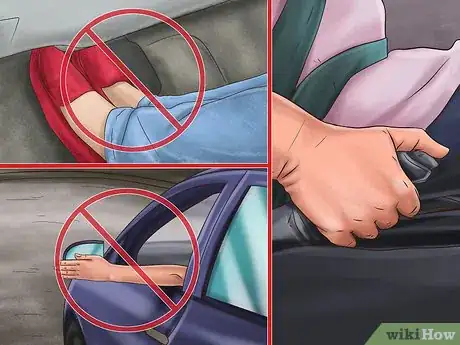
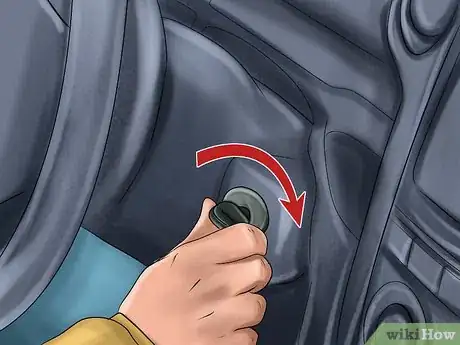
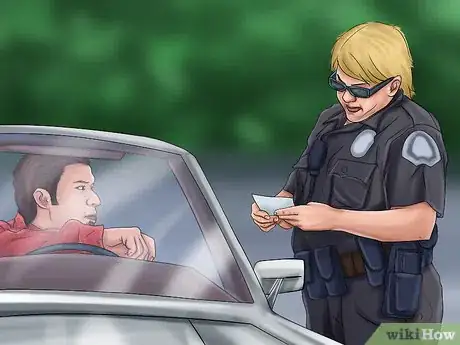
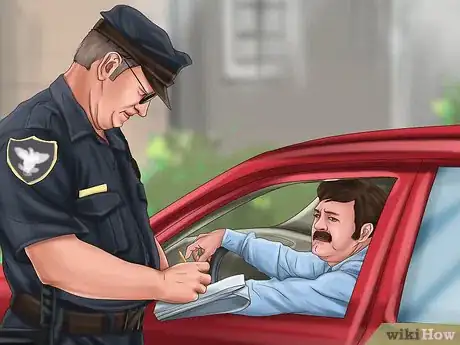
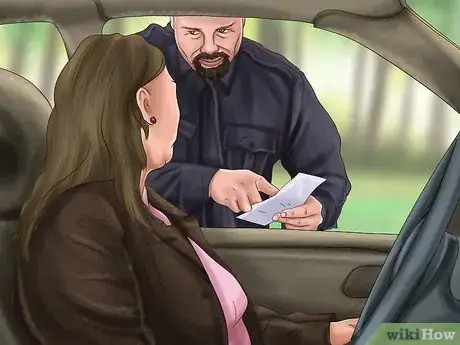
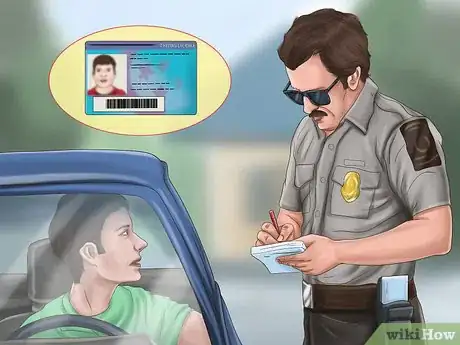
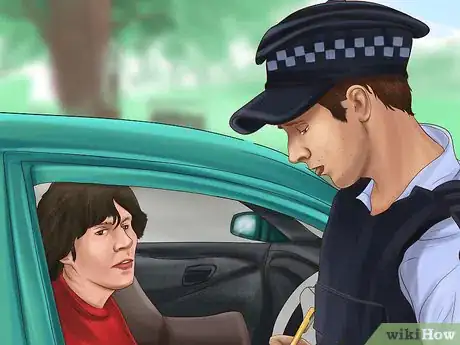
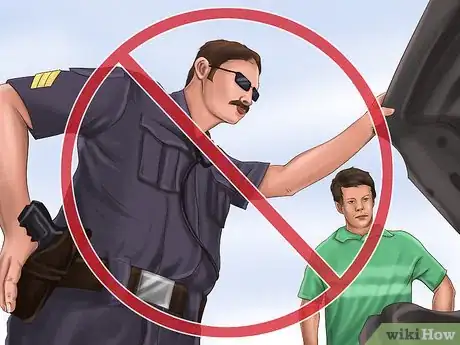
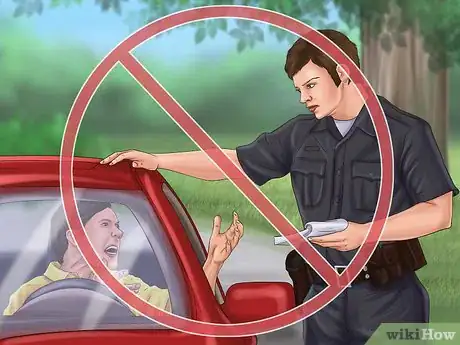
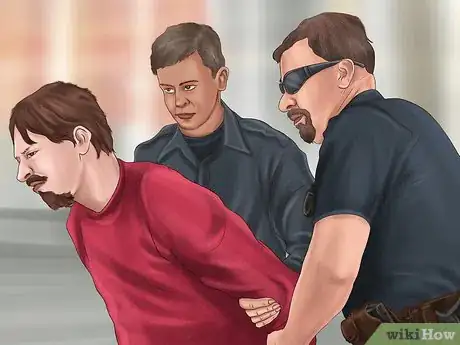
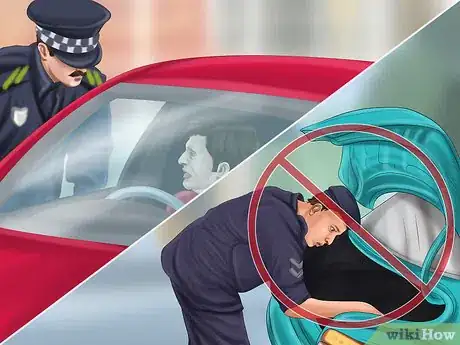
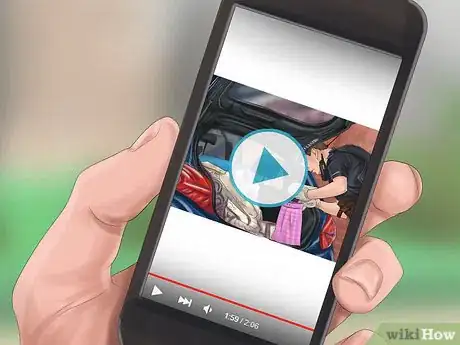
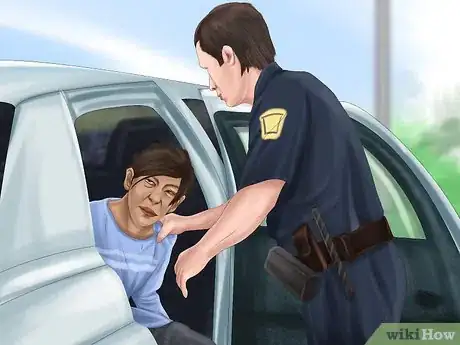
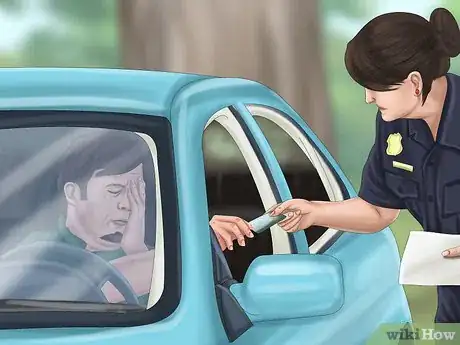
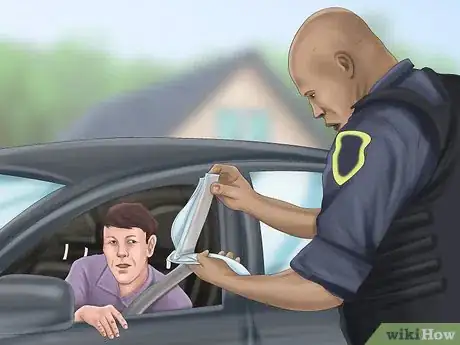

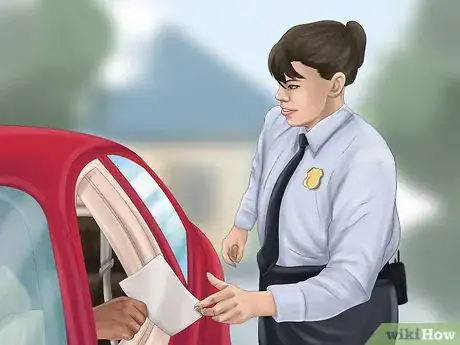
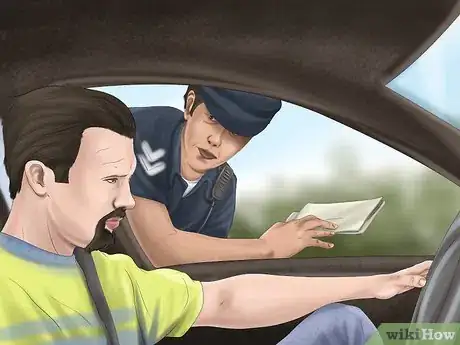
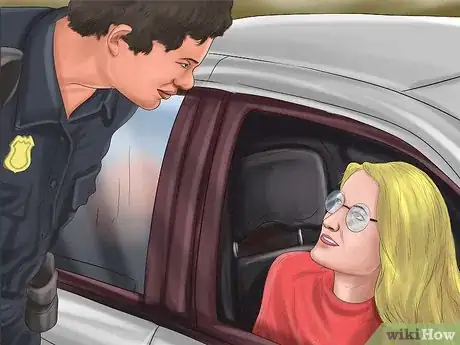

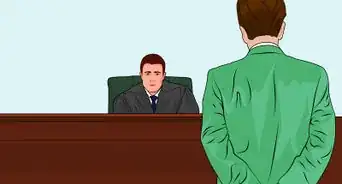
-Step-12.webp)




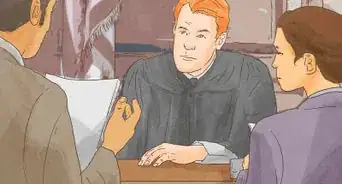


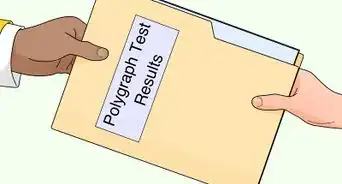

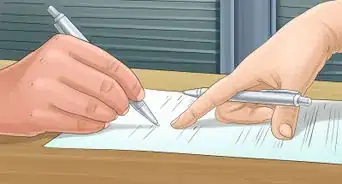
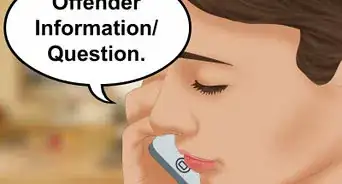








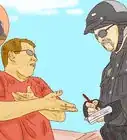

-Step-12.webp)
